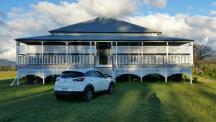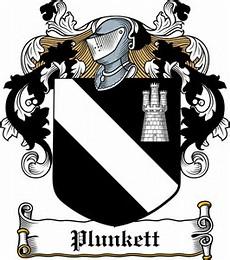
Mobile:
0412370698
26 Albert River Place Tamborine, 4270
Sponsors
History of the Plunkett Family

The Plunkett Family of Yarrabilba
Posted on October 15, 2015 by Friend of Plunkett
This article is reproduced here from the Yarrabilba ‘Place ofSong’ book, with thanks to Lend Lease, developers of the Yarrabilba Community.
A ‘tall, fair-bearded and handsome’ [*] Irishman was thefirst major European landholder of the Yarrabilba site.
Thomas Plunkett arrived aboard the full-rigged clipper, FieryStar, on 20 November 1863 after more than three months at sea alongside anassorted collection of English, Irish and Scottish immigrants. The journey fromLondon was rough but at least they survived; fire destroyed the Fiery Staronits return journey two years later off the coast of Auckland.
After trying his hand at gold mining in Gympie, Thomas selected land at Waterford in 1866 and that same year married an 18-year-old Irish immigrant, Maria, with whom he would ultimately have eight children. Threeyears later Thomas expanded his landholdings to include the Yarrabilba site, which stretched from the current northern boundary south to the Albert River.
Thomas’ grandson, Paul, says his grandfather, like most immigrants, came with little more than a willingness to work. The family story goes that when Thomas arrived to take ownership of his land, he fished out thetwo shillings and sixpence left in his pocket and threw it into the river saying “What good is this to me?”
Thomas wasted no time building a hut for the growing family onClutha Creek—which crossed the southernmost tip of his property—and planting upthe surrounding flats with vegetables. The location, however, proved fraughtwith danger.
Following a heavy downpour, the creek rose waist-deep, withinjust half an hour, trapping the family on the other side and destroying Thomas’crops. Unable to meet the government’s requirements to clear and crop his landon time, Thomas asked for an exemption and started out afresh.
By the end of January 1870, the family was settled in their new,wooden Queenslander on the other side of Clutha Creek, bordered to the southand east by the Albert River.
Unpredictable weather made farming extremely difficult forThomas and his four sons. Neither crops nor dairy herds could survive theunique combination of back-to-back droughts and flooding rains.
Paul says the severe drought of 1902 reduced Thomas’ dairy herdto just 11 head. ‘That year there wasn’t a blade of grass in sight but thefollowing year the grass grew as high as the middle wire of the fence and therewasn’t a thing to eat it.’ Thomas restocked his herd with 90 head ofJersey heifers purchased from the Northern Rivers region for £5 per head.
Sometimes, the river stopped running altogether and duringwinter it iced over as temperatures dipped to -6°C. Heavy frosts also killedpaddock grasses forcing locals to take bullock wagons over the mountain to theHope Island area where they harvested blady grass to keep the animals alive.
Raising cattle proved largely unprofitable until the inventionof refrigeration in the 1920s made meat exports possible but by then Thomas’dairy was well-established.
Thomas was a respected member of the community and held the seatof Albert in the Legislative Assembly from 1888-1908, save for one term(1896—1899). He also established a general store at Tamborine.
Thomas died in 1913 and ownership of Yarrabilba, together withthe dairy, passed to his son, Walter. Walter’s brother, Thomas Flood Plunkett, assumed responsibility for the family property near Kerry and became a national leader in the dairying sector. During these years, Paul recalls milking fivecows by hand before walking to Tamborine State School, which his grandfather had helped establish.
When Walter passed away in 1936 at the age of 52, Paul took over his father’s dairy and in 1965 sold most of the land north of Plunkett Road tot he Hancock family. Members of Paul’s extended family still own and work the land from Plunkett Road south to the Albert River.
Plunkett Conservation Park now borders the eastern edge of the Yarrabilba site.
